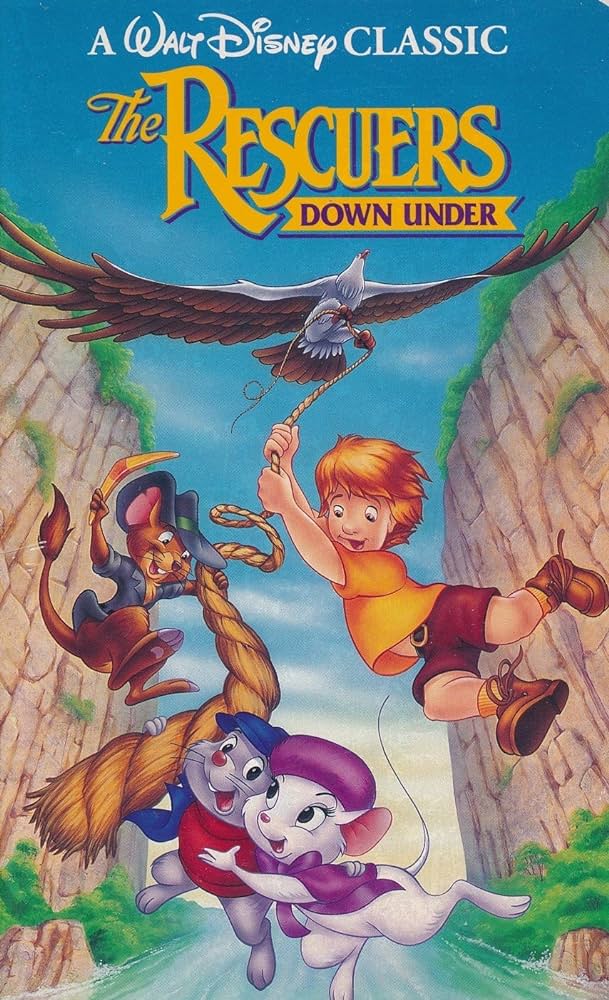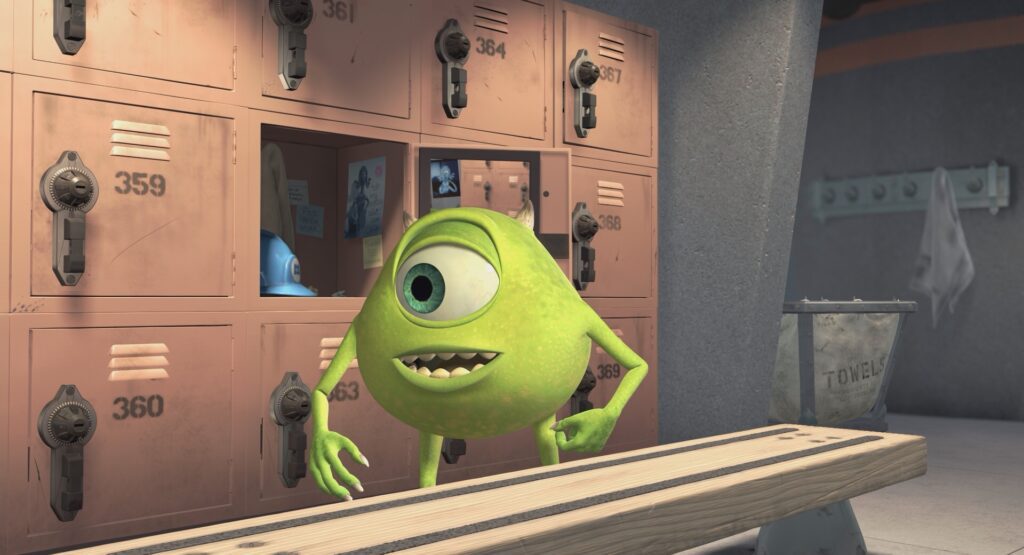“The Rescuers Down Under” (1990): A Soaring Sequel in Disney’s Animated Canon – Film Review

“The Rescuers Down Under,” released in 1990, is a noteworthy film in Disney’s animated repertoire, not only for being the studio’s first animated sequel but also for its technical innovations and distinct setting. Directed by Hendel Butoy and Mike Gabriel, this sequel to the 1977 “The Rescuers” brings back the charming mice duo, Bianca and Bernard, voiced by Eva Gabor and Bob Newhart, as they embark on an adventure in the Australian Outback. This film stands out for its ambitious scope, impressive animation, and environmental themes.
Narrative and Thematic Depth: Adventure in the Outback
The story of “The Rescuers Down Under” revolves around a young boy named Cody who is kidnapped by a poacher, McLeach, after rescuing a rare golden eagle. The Rescue Aid Society’s agents, Bianca and Bernard, are tasked with finding and saving Cody, leading to an adventure across the Australian wilderness.
The narrative is a significant departure from its predecessor, opting for a more action-oriented plot that diverges from the more subdued tone of the original. This shift allows for a broader exploration of themes such as environmental conservation, bravery, and friendship. The film deftly combines these themes with thrilling action sequences, making it an engaging watch for both children and adults.
Behind the Scenes: Pioneering Animation Techniques
One of the most remarkable aspects of “The Rescuers Down Under” is its groundbreaking use of computer animation. The film was one of the first major studio features to use the Computer Animation Production System (CAPS), developed by Pixar for Disney. This digital system allowed for more fluid, dynamic animation and vivid color palettes, marking a significant technological leap in animation.
The depiction of the Australian Outback and its wildlife was achieved through extensive research by the animation team. The animators studied the movement and behavior of animals native to Australia and incorporated these details into the film, adding to its authenticity and visual appeal.
Cinematography and Visuals: Capturing the Beauty of Australia
The film’s visual aesthetic is one of its strongest points. The Australian landscapes are rendered with breathtaking beauty, from the vast, sunbaked outback to the lush rainforests. The use of CAPS allowed for sweeping, panoramic shots that would have been difficult to achieve with traditional animation techniques.
The character animation, too, is noteworthy. The fluidity of movement and expressiveness of the characters, especially the animals, showcases the skill and attention to detail of the animators.
Voice Performances and Characterization
The voice cast of “The Rescuers Down Under” brings a great deal of charm and personality to the film. Bob Newhart and Eva Gabor reprise their roles as Bernard and Bianca, providing continuity from the first film and lending their characters a delightful chemistry. George C. Scott as the villainous McLeach adds a menacing yet charismatic presence, making him a memorable antagonist.
The introduction of new characters, like Jake the kangaroo mouse, voiced by Tristan Rogers, adds to the film’s appeal, providing a fresh dynamic to the story.
Music and Sound: Enhancing the Adventure
The film’s score, composed by Bruce Broughton, effectively captures the grandeur and excitement of the adventure. The music complements the film’s visuals beautifully, enhancing the overall sense of wonder
and adventure. The orchestral arrangements are particularly effective in conveying the scale of the Australian landscape and the urgency of the rescue mission.
The sound design also plays a crucial role in bringing the animated world to life. From the bustling sounds of the city to the wildlife noises of the outback, the sound effects add depth and realism to the film’s setting.
Themes: Environmental Awareness and Heroism
“The Rescuers Down Under” distinguishes itself within the Disney canon by tackling environmental themes head-on. The story’s focus on a young boy’s effort to save an endangered eagle and his subsequent capture by a poacher highlights issues of wildlife conservation and environmental protection.
The film also explores themes of heroism and courage, as evidenced by Cody’s unwavering commitment to saving the eagle and the risks taken by Bianca and Bernard to complete their mission. These themes resonate with audiences, adding a layer of depth to the film beyond its surface-level adventure.
Cultural Impact and Reception
Upon its release, “The Rescuers Down Under” received positive reviews for its animation and action sequences but did not achieve the same commercial success as other Disney films of the era. However, over time, it has gained recognition for its technical achievements and as a precursor to the Disney Renaissance that would follow.
The film’s use of CAPS and its integration of computer-generated imagery were particularly influential, setting the stage for future animated films to push the boundaries of what could be achieved with technology.
“The Rescuers Down Under” stands as a significant film in the history of animation, notable for its pioneering use of technology and its adventurous spirit. The film offers a compelling narrative that combines humor, action, and a heartfelt message about conservation and bravery. Its stunning visuals, engaging characters, and thoughtful themes make it a memorable entry in Disney’s animated library and a testament to the evolving art of animation.




